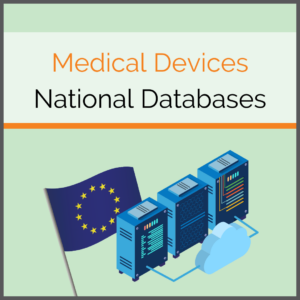
Before the 2017 adoption of the Medical Device Regulation (MDR) and thus EUDAMED, there were already national databases for medical devices in the EU countries. As in many aspects of the economy, the European medical device market was highly fragmented before the introduction of the MDR. Therefore, it was and is difficult for manufacturers to keep track of the various requirements and laws of the different countries. As the EUDAMED is not yet mandatory, uniform regulations are not in place. Subsequently, it varies from country to country whether it makes more sense to register medical devices in EUDAMED or still use national databases.
However, EUDAMED and the associated obligation intend to simplify this fragmentation. But what about national and European laws? What do manufacturers need to pay particular attention to? And what can I do as a manufacturer to be well prepared? In this article, we get to the bottom of these questions.
How do EU regulations work?
As a rule, EU law takes precedence over federal law. Due to the transition phase from MDR implementation to EUDAMED availability and the final obligation, this rule for medical devices is, unfortunately, somewhat vague. France is an excellent example of this: according to a document from July 2023, manufacturers received the recommendation to register their products in the EUDAMED. If they only register it in the national database, it has to be re-registered in EUDAMED when it becomes mandatory. Based on current EU information, however, registration in the database will not become obligatory until the end of 2025. Nevertheless, EU law is therefore not yet officially in force but will take precedence over federal law.
Germany stands in direct contrast to this. Products that are placed on the market there must be registered with the German Medical Device Information and Database System (DMIDS). This rule applies if EUDAMED is not mandatory under EU law. The same is currently the case in Italy. Manufacturers must continue to upload their products to the Nuovo Sistema Informativo Sanitario (NSIS; New Health Information System).
What do manufacturers need to pay attention to?
Depending on the target market, manufacturers and other players like importers and distributors must pay close attention to a few things.
- Familiarize yourself with the requirements: As the three examples illustrate, there is no standardized approach to national databases for medical devices during the transition phase. There are also differences in responsibility for registration. In France, Germany, and Italy, it is the manufacturers, while in Poland, the Czech Republic, and Belgium, importers and distributors are responsible for registering devices in the national database. The stakeholders must familiarize themselves with the laws of the various markets to meet the requirements.
- Know the basics of EUDAMED: In a survey of our website visitors and LinkedIn followers, we learned that around 33% of MedTech companies have not yet defined user roles in EUDAMED. Even if the deadline is still some time ahead, the effort required for the medical device database should not be underestimated. Users need to know which user roles are required for which tasks and how to create Basic UDI-DIs and UDI-DIs. Those responsible should also familiarize themselves with the possible upload methods.
- Preparing for the end of the transition phase: Another challenge still lies ahead of the actors. The target market is a crucial point here. While the medical devices for the French market are probably already found in EUDAMED, in Italy, or Germany, they probably still have to be transferred. Depending on the number of products, the workload for manufacturers increases.
What can I do as a manufacturer?
Although the use of EUDAMED is not yet mandatory, three modules are already available. The Actor Registration module has been available since December 2020. UDI/Device Registration and Notified Bodies and Certificates have been available since October 2021. Manufacturers should start using them now, especially given the phased publication of the modules. Some details have to be taken care of in advance. It is necessary to assign actor roles to responsible individuals to ensure clarity on who will be responsible for them. At least one person should be appointed to upload vigilance reports and certificates in the future. Additionally, the upload of UDIs must be taken care of. It needs to be decided whether manual uploading is sufficient or if there are too many products/UDIs to handle manually.
All these decisions lie within the company. However, we can help you with the upload. Be it the XML bulk upload or a solution for managing the entire product data.
If you are interested, please get in touch with us.
[Disclaimer] This information is only one possible interpretation of the regulations. Also, they are in a constant state of change, so the information in this article may be incomplete or out of date. The above article is expressly no legal advice. Please refer to the official documents for information before making any business decisions. (Status of information: April 2024)